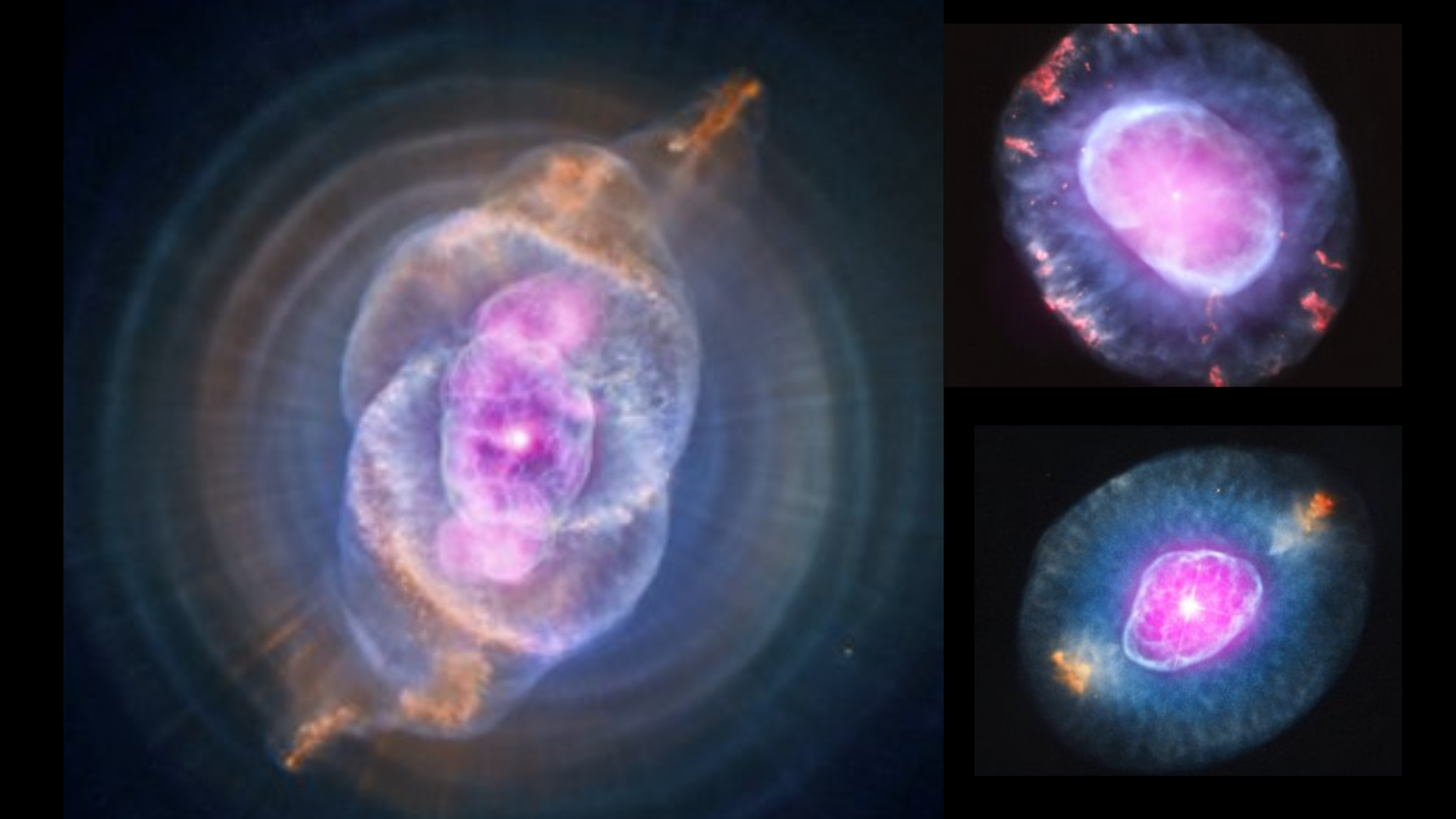Weird cosmic object identified as the remains of an exploded dead star
The distant object known as PM 1-322 is a variable planetary nebula, a shell of gas and dust shed by an exploded star

A strange cosmic object that has puzzled astronomers for two decades has been revealed to be the ancient remains of a long-dead star.
More specifically, new research conducted with space- and ground-based telescopes has shown the object, PM 1–322, is a variable planetary nebula. Originally discovered in 2005, PM 1-322 is located around 6,800 light-years from Earth.
As the shells of long-dead stars, planetary nebulas such as PM 1–322 are key in understanding how elements forged by stars during their lives are spread throughout the cosmos after their deaths. Because such material becomes the building blocks for the next generation of stars and planets -- and in the case of Earth, lifeforms like us -- planetary nebulas constitute a fossil record of our universe's evolution.
But even among the most interesting planetary nebulas, with some resembling beautiful cosmic cat's eyes and butterflies, PM 1–322 stands out. That's because the new research, led by Masaryk University researcher Ernst Paunzen, indicates that PM 1-322's light output changes over long periods of time. Plus, something within the object appears to be exhibiting eruption-like events.
Related: James Webb Space Telescope’s iconic image reveals a stellar surprise
Despite the name, planetary nebulas like PM 1–322 have nothing to do with planets.
Instead, they are expanding shells of gas and dust shed by stars when the stellar bodies have exhausted the hydrogen at their core. Once that hydrogen is exhausted, the star's internal nuclear fusion process of turning the element into helium ends. This also ends the energy that supports the star from collapsing under its own gravity and triggers the rapid contraction of the core.
Breaking space news, the latest updates on rocket launches, skywatching events and more!
But, as nuclear fusion still occurs in the star’s outer layers, the shell of the star “puffs out,” and turns it into what's known as a red giant. In about 5 billion years, our own sun will undergo this transformation, with its outer layers swelling to the size of Mars' orbit. This sort of mega sun will thus consume the inner planets of our solar system, including Earth.
After this transition happens, the outer layers of the star eventually disperse, leaving behind a cooling shell of gas and dust that's illuminated by a central stellar remnant --- what remains of the dead star’s core.
Analyzing data from the archival data from the Zwicky Transient Facility (ZTF) and NASA’s Wide-field Infrared Survey Explorer (WISE), the astronomers also spotted a bright object associated with PM 1–322, which they designated ZTFJ201451.59+120353.4. This could be what remains of the star that created the planetary nebula.
The team found that the variability of this object could indicate it's being eclipsed by a companion star. The eclipse-like event was spotted in 2022 and seemed to last around half a year.
Some features of the object the researchers uncovered include the variability of this possible star, defined by dimming in optical light that's accompanied by brightening red and infrared wavelengths. They also found the variability of ZTFJ201451.59+120353.4 changes over a period of either six or 12 years.
"Our most likely interpretation is that our target object involves a hot central star surrounded by gaseous and dusty disks, an extended nebula, and a possible companion star," the astronomers concluded. "Further observations are required to shed more light on the true nature of this enigmatic object."
The team’s research was published in May on the preprint server arXiv.

Robert Lea is a science journalist in the U.K. whose articles have been published in Physics World, New Scientist, Astronomy Magazine, All About Space, Newsweek and ZME Science. He also writes about science communication for Elsevier and the European Journal of Physics. Rob holds a bachelor of science degree in physics and astronomy from the U.K.’s Open University. Follow him on Twitter @sciencef1rst.
